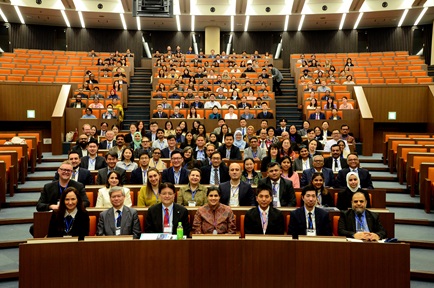Keeping keen eye out for business ventures
Business opportunity identification is a significant event that spurs entrepreneurial activity. It increases the chances of developing a viable business model for startup companies and SMEs.
By Thara Ravindran, Boh Wai Fong and Marilyn Uy

Singapore firms must identify ways to not only start potentially viable businesses, but also to reposition and scale their existing operations.
Business opportunity identification is a significant event that spurs entrepreneurial activity. It increases the chances of developing a viable business model for startup companies and SMEs.
A study by a research team at the Nanyang Business School, which interviewed almost 150 local businesspeople, found several means through which entrepreneurs identify potential opportunities. Here are three ways by which they do so - looking inwards, looking outwards and looking beyond.
LOOKING INWARDS
Business opportunities emerge as entrepreneurs look within their immediate personal environments or engage with other entities, systems or processes as part of their day-to-day work internally. This could include paying attention to personal experiences and customer complaints, and solving routinely-encountered problems that may be widely experienced by others.
For example, a mobile application developer derived his business idea from his personal experience of having to manage multiple cards, user IDs and complex passwords to get through the day. The entrepreneur developed and marketed a mobile app for companies to manage employee access to the company Intranet.
Paying attention to problems frequently encountered by oneself and others is another good approach to identify opportunities from within. People working within a given environment may come across problems that may affect them directly or others they work with. Tackling such problems can potentially lead to new business opportunities.
For example, the limitations of the traditional corrosion prevention methods prompted an entrepreneur in the oil and gas industry to look for a solution that would ensure longer life of the deployed equipment by providing better rust protection over longer periods. The solution identified proved to have wide applicability and catered to a larger market as it solved a key pain point faced by many in the industry.
LOOKING OUTWARDS
A key source of opportunity in one's immediate external environment is often based on the entrepreneur's frequent and empathetic interactions with other entities in the value chain - customer, supplier, partner or an affiliate.
For example, in the course of his interactions with hospitals, clinics and patients, the entrepreneur identified a common, pressing problem faced by the hemodialysis patients. This triggered entrepreneurial activity, forming the basis of his startup. The patients, he realised, were in need of a quick, inexpensive and non-invasive way of monitoring stenosis, a condition that results in the narrowing of the blood vessel used for dialysis, outside of a hospital or a clinical setting. This became a trigger for a business - making and selling blood pressure monitoring devices for kidney patients.
Observing activities of competitors can also help entrepreneurs identify business opportunities. Entrepreneurs could either imitate the best practices of competitors, or identify common mistakes made by the rivals as sources of business opportunities.
For example, an entrepreneur in the logistics and express delivery service observed that competitors typically offered local delivery services that take three to five working days - the industry norm over the last 20 years or so. This presented a hidden opportunity for him to offer an express delivery service, differentiating himself from the competition.
Further, keeping updated with industry news and participating in networking events may help entrepreneurs identify business opportunities.
LOOKING BEYOND
Entrepreneurs in our study looked for inspiration by examining other industries, other countries as well as emerging trends and innovative technological advancements. Adapting ideas from other boundaries often lead to novel business ideas, which could be developed into new business ventures. Specifically, observing how other sectors do business or how things are done in other countries inspire entrepreneurs to come up with new business ideas. Thus, visits and learning trips abroad help to plant seeds of new business ideas and present the entrepreneur with opportunities.
Identifying and integrating opportunities across multiple industry sectors require entrepreneurs to focus on ideas that apply horizontally across sectors. For example, a bio-medical certified entrepreneur in our study found an opportunity in porting a bio-certified natural ingredient from the farming sector to an entirely different domain - personal hygiene - by incorporating it into skincare products and toothpaste.
Technological trends can offer business opportunities for entrepreneurs. New technologies can alter the way things are done at a given point in time, improving efficiencies, or highlight consumer trends that businesses should take note of. For example, an entrepreneur running a mobile accessory retail business spotted an increasing demand for smart products, and incrementally started offering a broad range of technology-enhanced lifestyle products and accessories to exploit this emerging trend among white-collar workers. In short, the company made a quick turnaround within a year exploiting the trend of technology-enabled personal devices.
Entrepreneurs should also pay attention to new and emerging trends. Going against that established trend may provide new business opportunities. For instance, in the case of an e-learning company, the entrepreneur spotted a current trend of e-learning platforms and content providers such as Udemy that take advantage of the Internet, based on the assumption that the Internet will continue to grow and reach a wider audience. The entrepreneur, however, decided counterintuitively to go against the trend by designing educational and training content to be available offline in order to cater to markets where Internet access is intermittent.
As illustrated, Singapore firms use opportunity identification in these ways to not only start potentially viable ventures, but also to reposition and scale their existing businesses. Regardless of the means through which entrepreneurs identify these opportunities, their companies thrive even when pitched against larger competitors. Additionally, entrepreneurs who capitalise on opportunities through the above means report higher growth and revenues as opposed to those who do not seek opportunities persistently.
The writers are from Nanyang Business School, Nanyang Technological University. Thara Ravindran is research associate, while Boh Wai Fong and Marilyn Uy are respectively professor and associate professor.
Source: The Business Times, 13 March 2019







